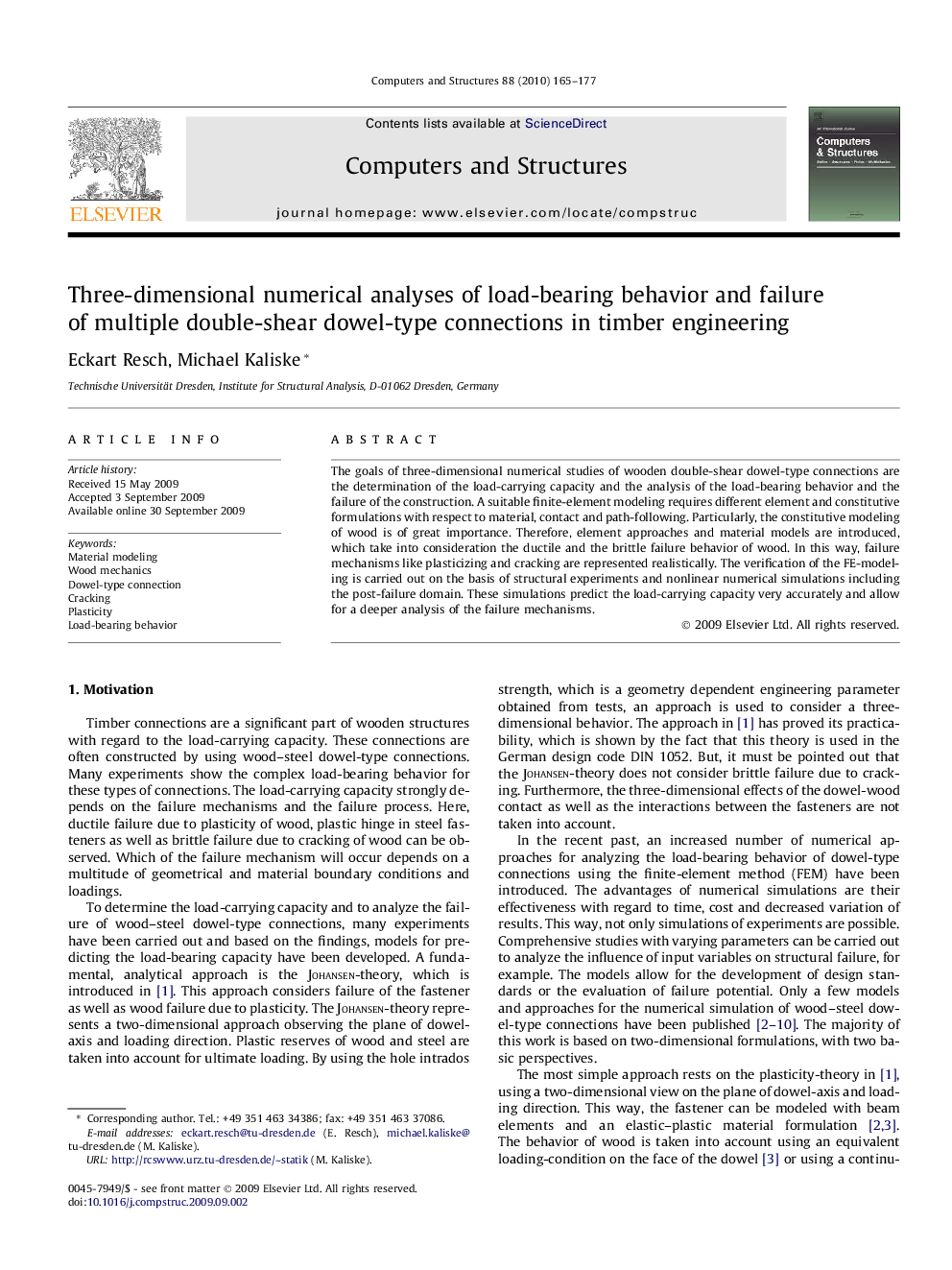| Article ID | Journal | Published Year | Pages | File Type |
|---|---|---|---|---|
| 510295 | Computers & Structures | 2010 | 13 Pages |
The goals of three-dimensional numerical studies of wooden double-shear dowel-type connections are the determination of the load-carrying capacity and the analysis of the load-bearing behavior and the failure of the construction. A suitable finite-element modeling requires different element and constitutive formulations with respect to material, contact and path-following. Particularly, the constitutive modeling of wood is of great importance. Therefore, element approaches and material models are introduced, which take into consideration the ductile and the brittle failure behavior of wood. In this way, failure mechanisms like plasticizing and cracking are represented realistically. The verification of the FE-modeling is carried out on the basis of structural experiments and nonlinear numerical simulations including the post-failure domain. These simulations predict the load-carrying capacity very accurately and allow for a deeper analysis of the failure mechanisms.
